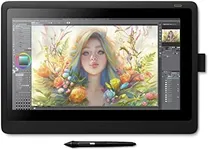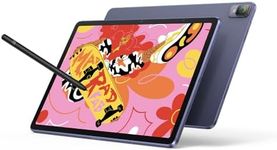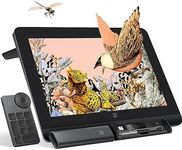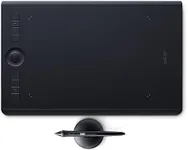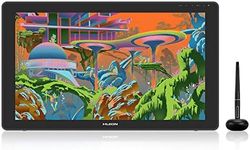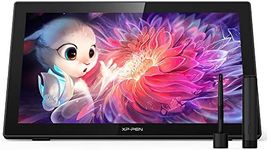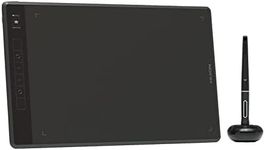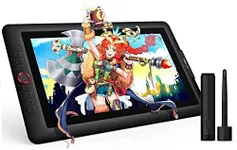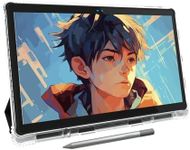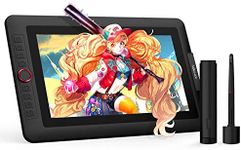Buying Guide for the Best Drawing Tablets
Choosing the right drawing tablet can make a big difference in your digital art experience. The best tablet for you depends on how you plan to use it, your skill level, and your workspace. Before buying, think about whether you want a tablet that connects to your computer or one that works on its own, and consider how portable you need it to be. Understanding the main features will help you find a tablet that matches your creative needs and makes drawing comfortable and enjoyable.Display TypeDrawing tablets come in two main types: those with a built-in screen and those without. Tablets with a screen let you draw directly where you see your work, which feels more natural and is great for beginners or anyone who wants a more intuitive experience. Tablets without a screen require you to look at your computer monitor while drawing on the tablet, which can take some getting used to but are often lighter and more affordable. If you want a direct, paper-like feel, go for a tablet with a display. If you’re comfortable with a bit of a learning curve and want something simple, a non-display tablet might be right for you.
Active AreaThe active area is the part of the tablet where you can draw. A larger active area gives you more space to work, which is helpful for detailed artwork or if you like making big, sweeping strokes. Smaller active areas are more portable and can be easier to use if you have limited desk space or mostly do quick sketches. Think about the size of your usual drawings and your workspace to decide what active area suits you best.
Pen Pressure SensitivityPressure sensitivity refers to how many levels of pressure the tablet can detect from the pen. Higher pressure sensitivity means the tablet can pick up on subtle differences in how hard you press, allowing for more precise control over line thickness and shading. Most modern tablets offer at least 2,048 levels, but some go up to 8,192 or more. If you do detailed, expressive work or want your digital art to feel more like traditional drawing, look for higher pressure sensitivity. For casual doodling or note-taking, lower sensitivity is usually enough.
Pen TypeThe pen, or stylus, can be battery-free or require charging. Battery-free pens are lighter and don’t need to be recharged, making them more convenient for long sessions. Some pens also offer tilt recognition, which lets you shade and draw at different angles, similar to a real pencil. If you want a natural drawing experience and don’t want to worry about charging, a battery-free pen with tilt support is a good choice. If you’re okay with charging and don’t need advanced features, a basic pen will work fine.
ConnectivityTablets can connect to your computer or device using USB cables, Bluetooth, or even wirelessly. Wired connections are usually more stable and don’t need charging, but wireless options give you more freedom to move around. If you plan to use your tablet in one place, a wired connection is reliable. If you want to draw on the go or dislike cables, look for wireless or Bluetooth options.
CompatibilityNot all tablets work with every operating system or software. Some are designed for Windows, others for Mac, and some even work with Android or iOS devices. Make sure the tablet you choose is compatible with your computer or device and the drawing programs you want to use. Check the manufacturer’s website or product details to confirm compatibility before buying.
Shortcut ButtonsMany drawing tablets have customizable buttons on the tablet or pen that let you quickly access tools or commands, like undo or zoom. More buttons can speed up your workflow, especially if you use complex software. If you like having shortcuts at your fingertips, look for a tablet with several programmable buttons. If you prefer a simple setup, fewer buttons may be less distracting.
PortabilitySome tablets are lightweight and easy to carry, while others are larger and meant to stay on your desk. If you travel often or like to draw in different places, a smaller, portable tablet is convenient. If you have a dedicated workspace and want a larger drawing area, a bigger tablet might be better. Think about where and how you’ll use your tablet most often to decide what level of portability you need.
